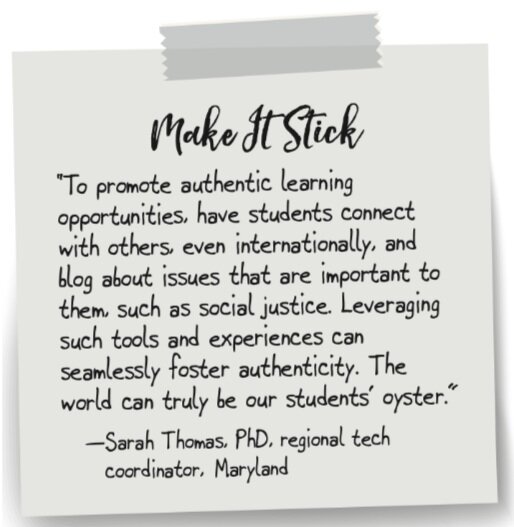Digital portfolios have been something that I have been work on for over ten years, and I am very passionate about not only the product it can create but, more importantly, the process. Having a space to share my learning and reflections has been powerful during this time in our world.
In this post, I share some of the questions districts, schools, and individuals need to consider for implementation. I address all of these questions in my most recent course on creating your digital portfolio, but hopefully, the items below will give you some food for thought!

Digital portfolios are something that is starting to take off in schools. Different software programs will make “portfolios” easy to share, yet do we truly embrace the power that a digital portfolio can bring into our schools? Since it is “digital,” we need to go beyond a collection that only represents one year of learning, but can show the progression over time.
Here are some questions for you to consider as you look into the process.
1. Is this a learning portfolio, showcase portfolio, or a combination of both?
Does this show the student’s progression over time (learning), or just the best stuff (showcase)? There are considerable benefits to both over time and a combination, from my experience, is the best path to pursue.
2. Who owns the learning?
Is this a portfolio that only shows “school” work, or does the student have the opportunity to display what they are passionate about, or is it merely for items to be displayed based on what the teacher wants? Is it a combination of both? If the student feels no ownership over the process and product, the results will not be as powerful as if they do.
3. How will it be exported after the process?
For starters, see the question above. Secondly, if there is no plan to ensure that students have the opportunity to put all of this learning into their own space, eventually, you are missing another opportunity that digital provides.
4. How will you make the audience eventually go global?
A lot of parents and educators are worried about the work of a student getting “out there” (for various reasons). Still, if the portfolio is only available upon request, we are taking a very “paper” mentality to a “digital” platform. This does not mean the whole world has to see everything from the beginning, or the student needs to share it with the world if they do not want to, but the progression plan to share it with the world should be there. Will the audience be limited long term?
5. What brings people to the portfolio?
Is there any mechanism that brings people to the portfolio other than telling people to come? Simple things like email help to build an audience. Is the space more likely to be seen and more valuable to the learning if it goes out to an audience, other than people coming to the portfolio?
6. What impact will this have on the learner’s digital footprint?
Will Richardson suggests that by the time kids graduate grade 12, you should be able to google them and find “good” stuff about them (see image at the top of the post). Does the portfolio help in this endeavor when every student we work with now will be googled for jobs, university, or a myriad of other things.
7. What about next year and other classes?
This is a HUGE question. If the portfolio only lasts for one year, then you are missing a great opportunity. What professional learning is in place for teachers to support a connection of learning over time for the students? What will the students work look like over time, and how will they be able to google or search for their learning? If the plan is not in place to grow this over time, we lose so much from the process.
If these questions aren’t considered, I am wondering if we are just doing a digital version of “school” or rethinking the empowering possibilities that a digital portfolio can truly provide for learning in and out of school? This is more than just thinking about “what software we should use,” but envisioning the potential of what this process can bring to our students and ourselves.
***If you would like to learn more about this process, here is the introduction to my latest course on creating your digital portfolios.














